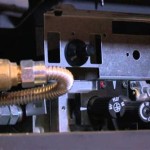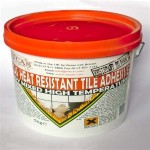Wood Burning Fireplace Gas Starter: An Overview
A wood burning fireplace provides warmth and ambiance, but the initial process of starting a fire can be challenging and time-consuming. A gas starter offers a convenient and efficient solution, simplifying the ignition of wood and reducing the reliance on kindling and paper. This article explores the functionality, benefits, installation considerations, and safety aspects of gas starters for wood burning fireplaces.
A gas starter typically consists of a perforated pipe or burner installed within the firebox of the fireplace. This pipe connects to a natural gas or propane supply, allowing for a controlled flame to be introduced under the wood. The flame ignites the wood quickly, establishing a sustainable fire without the need for extensive manual effort. Gas starters are designed to be used for a limited time, typically 10-15 minutes, during the initial ignition phase. Once the wood is burning steadily, the gas supply is turned off.
Key Benefits of Using a Gas Starter
The adoption of a gas starter in a wood burning fireplace provides several advantages. These benefits range from ease of use and improved safety to a reduction in the consumption of traditional fire-starting materials.
First, consider the convenience factor. Using kindling and paper to start a fire often requires multiple attempts and careful arrangement of materials. A gas starter eliminates this laborious process, providing a consistent and reliable flame to quickly ignite the wood. This is especially beneficial for individuals with mobility limitations or those who simply prefer a more streamlined approach to fire starting. Furthermore, it reduces the frustration associated with stubborn fires that refuse to catch properly.
Second, a gas starter can enhance safety by minimizing the need to reach into the firebox while attempting to light the fire. Traditional methods involve placing kindling and paper deep within the fireplace, potentially exposing hands and arms to hot embers or flames. With a gas starter, the user initiates the flame from a safe distance, reducing the risk of burns or other injuries. This is particularly important in households with children or pets, where accidental contact with the fire could occur.
Third, the environmental impact is generally less with a gas starter. While it does consume natural gas or propane, the rapid ignition of the wood reduces the amount of paper and kindling required. Burning paper releases particulate matter into the air, contributing to indoor and outdoor air pollution. By minimizing paper consumption, a gas starter can help to reduce the overall environmental footprint associated with using a wood burning fireplace. Furthermore, less reliance on kindling gathering reduces impacts to local ecosystems.
Installation Considerations for Gas Starters
Proper installation is crucial for the safe and effective operation of a gas starter. It is highly recommended that a qualified professional, such as a licensed plumber or HVAC technician, perform the installation. This ensures that the gas line is connected correctly, the burner is positioned optimally, and all safety regulations are met.
Before installation, it is essential to determine the type of gas available – natural gas or propane. The gas starter must be compatible with the fuel source. Using an incompatible gas starter can lead to inefficient operation, potential safety hazards, and damage to the unit. The gas supply line must be sized appropriately to provide sufficient gas flow to the burner. This is typically determined by the burner's BTU (British Thermal Unit) rating and the length of the gas line.
The burner itself should be positioned in a location that allows for even distribution of the flame under the wood. Typically, it is placed at the bottom of the firebox, near the front of the fireplace. The burner should not be obstructed by logs or other materials, as this can impede the flame and prevent proper ignition. Additionally, the positioning should allow for easy access to the gas shut-off valve.
Connecting to the gas supply requires careful attention to detail. The gas line must be properly sealed to prevent leaks. A gas shut-off valve should be installed upstream of the burner, allowing for easy shut-off of the gas supply in case of emergency or when the fireplace is not in use. It is also crucial to test the gas line for leaks after installation using a soap solution or a gas leak detector. Any leaks must be repaired immediately.
Local building codes and regulations may dictate specific requirements for gas starter installations. It is essential to consult with local authorities to ensure compliance with all applicable codes. This may include requirements for venting, clearances, and the type of materials used. Failure to comply with building codes can result in fines and potential safety hazards.
Safety Precautions and Operational Guidelines
Operating a gas starter safely requires adherence to certain precautions and guidelines. These measures minimize the risk of accidents and ensure the longevity of the equipment.
First and foremost, it is important to never leave the gas starter unattended while it is in operation. Monitoring the flame ensures that it is burning properly and that no logs are shifting or blocking the burner. If any unusual activity is observed, such as excessive smoke or a gas smell, the gas supply should be shut off immediately.
The gas starter should only be used for the intended purpose – to ignite the wood. It should not be used as a primary source of heat or to burn materials other than wood. Burning inappropriate materials can damage the fireplace and create hazardous fumes.
The gas starter should only be operated for a limited time, typically 10-15 minutes. Overuse can overheat the burner and potentially damage the gas line. Once the wood is burning steadily, the gas supply should be turned off. Allowing the gas starter to run continuously is wasteful and potentially dangerous.
Regular maintenance is essential for the safe and efficient operation of the gas starter. This includes inspecting the gas line for leaks, cleaning the burner to remove debris, and ensuring that the gas shut-off valve is functioning properly. A qualified professional should perform a thorough inspection of the gas starter at least once a year.
Carbon monoxide (CO) is a colorless, odorless gas that can be produced by burning wood. It is important to have a functioning carbon monoxide detector in the home, especially near the fireplace. CO detectors provide an early warning of dangerous CO levels, allowing occupants to evacuate the premises if necessary. The detector should be tested regularly to ensure that it is working properly.
Furthermore, ensuring proper ventilation within the fireplace is crucial. The fireplace damper should be fully open before starting a fire to allow for proper airflow and prevent the build-up of smoke and gases inside the home. Regular chimney cleaning is also essential to remove creosote, a flammable substance that can accumulate in the chimney and cause chimney fires. A qualified chimney sweep should perform the cleaning at least once a year.
Educating all members of the household about the safe operation of the gas starter and the potential hazards associated with wood burning fireplaces is vital. This includes instructing children not to play near the fireplace and ensuring that everyone knows how to shut off the gas supply in case of an emergency. Clear communication and awareness can help to prevent accidents and promote a safe environment.
In the event of a gas leak, it is crucial to take immediate action. Evacuate the premises and contact the local gas company or fire department. Do not attempt to repair the leak yourself. Allowing trained professionals to handle the situation minimizes the risk of explosions or other serious incidents.

How To Install A Log Lighter Fireplace Gas Starter Pipe

Gas Fireplace Starters Log Lighter Universal

Simple Tips For Fall Fires With A Wood Burning Gas Fireplace Or Starter Hometown Plumbing North Atlanta Plumber

Gas Fireplace Starters In Chicago Capital Chimney Corp

Gas Fireplace Starters In Chicago Capital Chimney Corp

Why You Can T Burn Wood In A Gas Fireplace But Starter
.png?strip=all)
How To Install A Log Lighter Fireplace Gas Starter Pipe

Greenstart Igniter Made In America Fireplace Xtrordinair

Fireplaces Life Of An Architect

Can You Add Fire Glass To A Gas Burner Made For Wood Logs Hometalk
Related Posts








